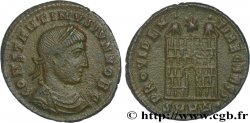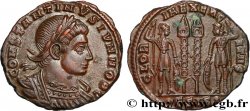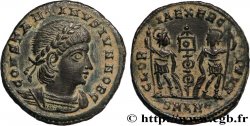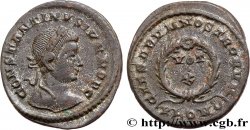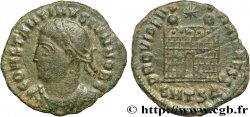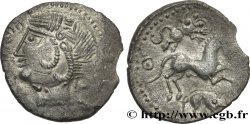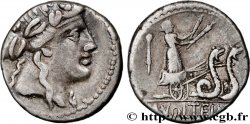Live auction - brm_479085 - CONSTANTINE II Centenionalis ou nummus
Чтобы принять участие в торгах, вы должны войти в систему и стать подтвержденным участником аукциона. Войдите, чтобы сделать ставку. Ваш аккаунт будет подтвержден в течение 48 часов. Не ждите до закрытия торгов, чтобы зарегистрироваться.Сделав ставку на данный товар, вы вступаете в юридическое соглашение на покупку выбранного товара и нажатием кнопки «Сделать ставку» подтверждаете принятие вами условий интернет-аукционов cgb.fr.
Ставка может бить сделана только в полном эквиваленте евро. Торги закроются согласно времени, указанному в описании товара, все ставки, сделанные после закрытия торгов, учитываться не будут. Не следует откладывать предложение вашей ставки до последнего момента, так как система может не успеть обработать вашу заявку, и ваша ставка не будет принята. Более детальную информацию вы найдёте здесь: FAQ по интернет-аукционам.
Все ставки победителей подлежат комиссии 18%.
Все ставки победителей подлежат комиссии 18%.
| Оценить : | 2 000 € |
| Цена : | 950 € |
| Максимальная предлагаемая цена : | 950 € |
| Конец торгов : | 05 June 2018 15:00:36 |
| Участников : | 1 Участников |
Тип Centenionalis ou nummus
Дата: 321-322
Монетный двор / Город: Lyon
Металл: copper
Диаметр: 18,5 mm
Ориентация осей монеты: 6 h.
Вес: 3,19 g.
Редкость: R3
Комментарии о состоянии
Exemplaire sur un flan ovale parfaitement centré avec les grènetis complets. Portrait de Constantin II magnifique tout à fait exceptionnel. Revers bien venu à la frappe. Belle patine marron foncé
Ссылки в каталоге: :
Происхождение:
Cet exemplaire provient de la collection Philippe Lacoste
Лицевая сторона
Аверс: легенда: CONSTANTINVS IVN N C.
Аверс: описание: Buste lauré et cuirassé de Constantin II à droite, vu de trois quarts en avant, levant la main droite (J*).
Аверс: перевод: “Constantinus Iunior Nobilissimus Cæsar”, (Constantin le jeune très noble césar).
Обратная сторона
Реверс: легенда: BEATA TRAN-QVILLITAS/ VO/ TIS/ XX/ C|R// PLG.
Реверс: Описание: Autel inscrit surmonté d'un globe et de trois étoiles.
Реверс: перевод: “Beata Tranquillitas/ Votis vicennalibus”, (L’heureuse Tranquillité/ Vœux pour le vingtième année de règne).
Комментарий
Rubans de type 3 aux extrémités bouletées. La main droite est présentée relevée dans l’attitude de l’Adlocutio (harrangue) ou de l’Adventus (salutation à l‘arrivée). P. Bastien a recensé seulement deux exemplaires pour ce type de buste (J*) pour la période. Même coin de droit que les exemplaires des musées de Berlin et de Vienne (B. 136 a et b, pl. VIII). Au revers, les lettres dans le champ C|R pourraient être les initiales de “Claritas Reipublicæ” pour l’éclat de la République. Le globe semble orné d’une croisette cantonnée de quatre globules comme au droit. C’est le troisième exemplaire publié. Manque à la collection du Cabinet des médailles de la BnF. Prendra le numéro 136c dans le Supplément III du Bastien. C’est la première fois que nous présentons un exemplaire avec ce type de buste (J*).
Type 3 ribbons with rounded ends. The right hand is presented raised in the attitude of Adlocutio (harrangue) or Adventus (greeting on arrival). P. Bastien has identified only two examples for this type of bust (J*) for the period. Same obverse die as the examples in the museums of Berlin and Vienna (B. 136 a and b, pl. VIII). On the reverse, the letters in the field C|R could be the initials of “Claritas Reipublicæ” for the brilliance of the Republic. The globe seems to be decorated with a crosslet surrounded by four globules as on the obverse. This is the third example published. Missing from the collection of the Cabinet des médailles of the BnF. Will take the number 136c in Supplement III of Bastien. This is the first time that we present an example with this type of bust (J*)
Type 3 ribbons with rounded ends. The right hand is presented raised in the attitude of Adlocutio (harrangue) or Adventus (greeting on arrival). P. Bastien has identified only two examples for this type of bust (J*) for the period. Same obverse die as the examples in the museums of Berlin and Vienna (B. 136 a and b, pl. VIII). On the reverse, the letters in the field C|R could be the initials of “Claritas Reipublicæ” for the brilliance of the Republic. The globe seems to be decorated with a crosslet surrounded by four globules as on the obverse. This is the third example published. Missing from the collection of the Cabinet des médailles of the BnF. Will take the number 136c in Supplement III of Bastien. This is the first time that we present an example with this type of bust (J*)







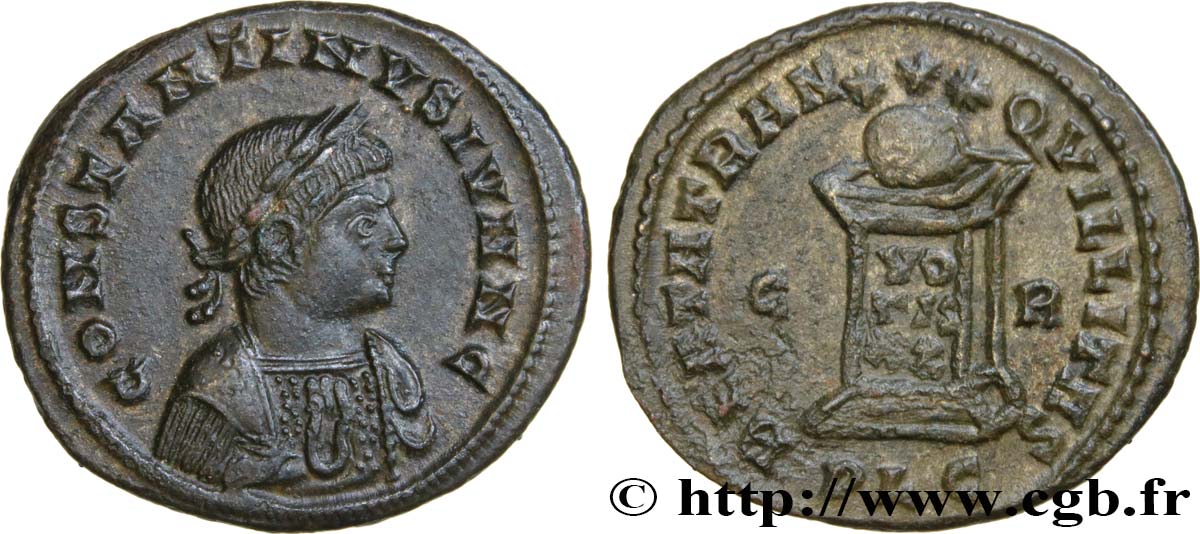
 Cообщить об ошибке
Cообщить об ошибке Распечатать страницу
Распечатать страницу Отправить мой выбор
Отправить мой выбор Задать вопрос
Задать вопрос Consign / sell
Consign / sell
 Информация
Информация